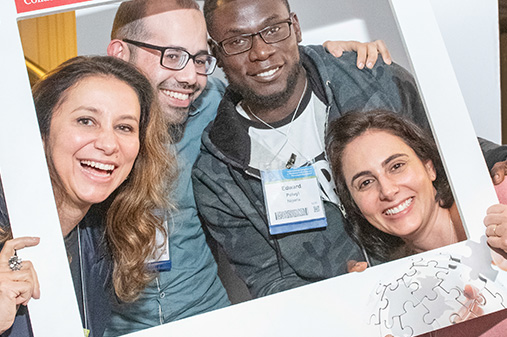Highlights in Neuroimaging | Congress 2022
[00:00:00] Dr. Michele Matarazzo: Hello, and welcome to a special issue of the MDS Podcast on the International Congress of Parkinson's Disease and Movement Disorders. We are here today in Madrid to discuss about the main novelties in neuroimaging and movement disorders. We have the pleasure to have with us Professor Oury Monchi from the Montreal Geriatric Institute at the University of Montreal in Canada.
And he's also the vice chair of the near imaging study group of the movement disorder society. We really thank you for joining.
[00:00:30] Prof. Oury Monchi: Thank you for having me.
View complete transcript
[00:00:31] Dr. Michele Matarazzo: So before we dive into the meeting contents, what is hot right now in the field of neuroimaging in Parkinson's disease and movement disorders in general?
[00:00:40] Prof. Oury Monchi: I think one important thing is the use of machine learning. Actually, there's a shift from going from traditional machine learning to deep learning networks. So we saw that there was an abstract from Plymouth, but the real question is, is it gonna be used in clinics?
And I think we have a hint of that from the group in Paris, who's actually starting to use it in clinics for the diagnoses of Parkinson's plus. And one of the questions, because there were different posters and different people doing it is, what sequences are we gonna use? Is it just gonna be T1, someone using T2 protein density and somehow mixing it with DTI? And the future will tell.
[00:01:23] Dr. Michele Matarazzo: Well, that's great. And definitely these new kind of analysis and technologies are gonna change the way we analyze neuroimaging.
[00:01:31] Prof. Oury Monchi: I do not think they will replace the clinician, though. They will help the clinician.
[00:01:35] Dr. Michele Matarazzo: Okay. Well, hopefully! Now talking about the Congress, what are your main highlights in neuroimaging during this Congress?
[00:01:44] Prof. Oury Monchi: So one of them was a study by group from Belgium, UCBG. It was interesting, they did a longitudinal study and compared it with a selective dopamine ligand and they found that, well, one would say, it didn't evolve with time. It didn't track the evolution of the disease, whereas the dopamine ligand did.
But this, I don't think it's time to turn the page yet, though. Because I think the results will need to be reproduced. And there's also other groups developing flouride versions of this ligand or similar ligand, one of them being the group of Antonin Strafella in Toronto.
[00:02:21] Dr. Michele Matarazzo: That's great. So developability of more tracers.
We always hope it's gonna help us when these things happen. And actually the dopamine is better. It's complicated to accept it, but as you say, we have to study more before we turn the page.
Also, I know that the Neuroimaging Study Group is a very active group within the Society. What are the novelties from the study group and what should we expect for the next year?
[00:02:44] Prof. Oury Monchi: Before going to the next year, I will go back on what was done in the past year. There was a really excellent paper by Cecilia Peralta, which appeared in Movement Disorders Clinical Practice, actually got the gold award. And I think it was very useful for the clinicians because it provided a precise algorithm, both for MR method and tech and spec method, on when the clinician should seek more complex imaging or just stick to the basic or not use it. And it was, I think, very well written with nice diagrams and figures. And, I think that was a really nice thing that came out of the Neuroimaging Study Group.
Other things that are going on are where we're building consortium, where we're trying to, pull as much data as we can for different use either for Parkinson's plus, but also for cognitive deficits in Parkinson's disease. And this will allow us to compare our analysis methods on bigger datasets. However, there was a bit of a slowdown due to COVID, as you can imagine.
[00:03:56] Dr. Michele Matarazzo: Great. We really look forward for all these new things that the Neuroimaging Study Group is going to do. I also want to remind our listeners that we have featured the article that has been awarded, so you can go back and listen to the interview. And thank you very much for joining us Professor Oury Monchi.
[00:04:13] Prof. Oury Monchi: Thank you very much for having me.
Professor Oury Monchi
Montreal Geriatric Institute
University of Montreal, Canada.









